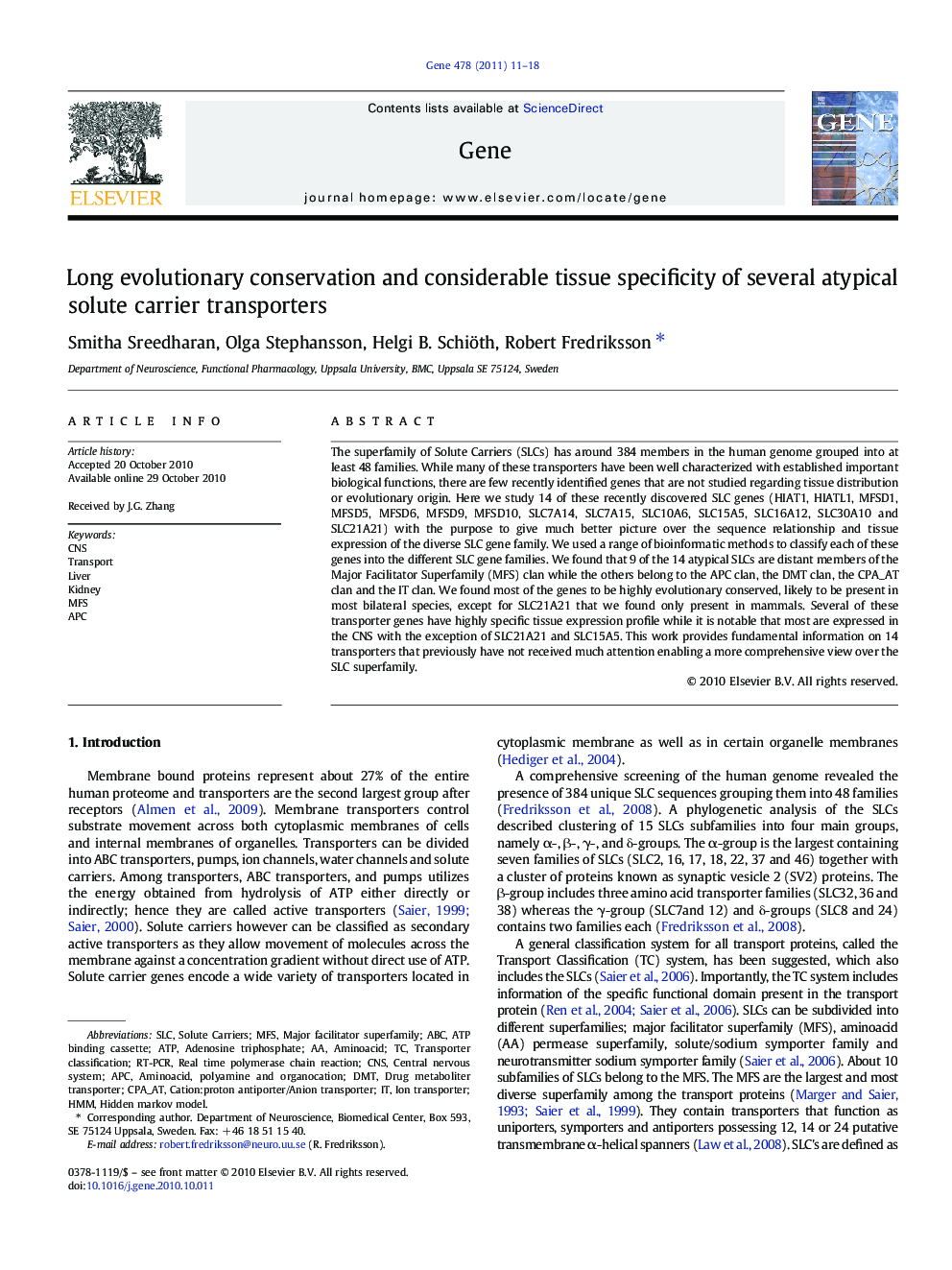| کد مقاله | کد نشریه | سال انتشار | مقاله انگلیسی | نسخه تمام متن |
|---|---|---|---|---|
| 2818430 | 1569859 | 2011 | 8 صفحه PDF | دانلود رایگان |

The superfamily of Solute Carriers (SLCs) has around 384 members in the human genome grouped into at least 48 families. While many of these transporters have been well characterized with established important biological functions, there are few recently identified genes that are not studied regarding tissue distribution or evolutionary origin. Here we study 14 of these recently discovered SLC genes (HIAT1, HIATL1, MFSD1, MFSD5, MFSD6, MFSD9, MFSD10, SLC7A14, SLC7A15, SLC10A6, SLC15A5, SLC16A12, SLC30A10 and SLC21A21) with the purpose to give much better picture over the sequence relationship and tissue expression of the diverse SLC gene family. We used a range of bioinformatic methods to classify each of these genes into the different SLC gene families. We found that 9 of the 14 atypical SLCs are distant members of the Major Facilitator Superfamily (MFS) clan while the others belong to the APC clan, the DMT clan, the CPA_AT clan and the IT clan. We found most of the genes to be highly evolutionary conserved, likely to be present in most bilateral species, except for SLC21A21 that we found only present in mammals. Several of these transporter genes have highly specific tissue expression profile while it is notable that most are expressed in the CNS with the exception of SLC21A21 and SLC15A5. This work provides fundamental information on 14 transporters that previously have not received much attention enabling a more comprehensive view over the SLC superfamily.
Journal: Gene - Volume 478, Issues 1–2, 1 June 2011, Pages 11–18